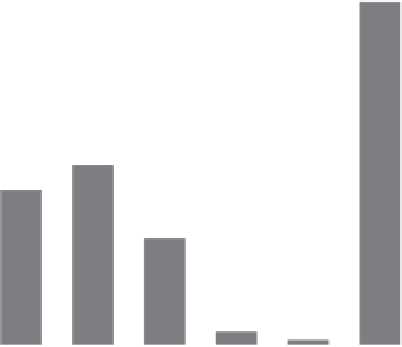Environmental Engineering Reference
In-Depth Information
30
25
11.4
20
15
0.4
28.4
0.6
10
14.9
12.8
5
8.8
3.8
0.4
1.1
0
Energy spent in supplies and wastewater treatment
Gross energy electricity and fuels
Figure 12.1
Energy requirements in the farm-to-gate life cycle assessment of polylactide.
Data from Vink et al., 2003.
into paper consumes additional energy. One kg of base paper from standing timber takes
84 MJ of energy and 1 kg of board paper, 103 MJ (Boustead and Hancock, 1981). The caloric
content of base paper and board paper is 14 and 16 MJ/kg in that order, making the total
embedded energy in base and board packaging paper 98 and 119 MJ/kg, respectively. Blanco
et al. (2004) report 10.8 GJ/tonne of thermal energy and 4.5 GJ/tonne of electricity.
Water consumption
Water consumption varies a great deal among different authors, which is likely due to
difference in the efficiency of the processes evaluated and the methodology used. For paper
production, Parker (1991) reports 7,600 m
3
per tonne, and Haygreen and Bowyer (1989) report
208 m
3
per tonne. More typical values are between 300 and 400 m
3
per tonne and high water
efficiency mills use between 10 and 25 m
3
per tonne (PaperOnWeb, n.d.).
For petroleum-derived plastics, Vink et al. (2003) estimate a consumption of approximately
350 m
3
/tonne for cellophane, 55 m
3
/tonne for LDP and polypropylene, 47 m
3
/tonne for PET,
and 50 m
3
/tonne for PLA. For polyethylene and polypropylene, Katsoufis (2009) estimated
8.7 and 8.27 m
3
/tonne for polyethylene and polypropylene, respectively; and Parker (1991)
reports 500 m
3
/tonne for polyethylene, polystyrene, and polyvinyl chloride.
Production of aluminum and tin steel consumes 1100 and 60 m
3
of water per tonne,
respectively, and glass, 100 m
3
/tonne (Parker, 1991).









